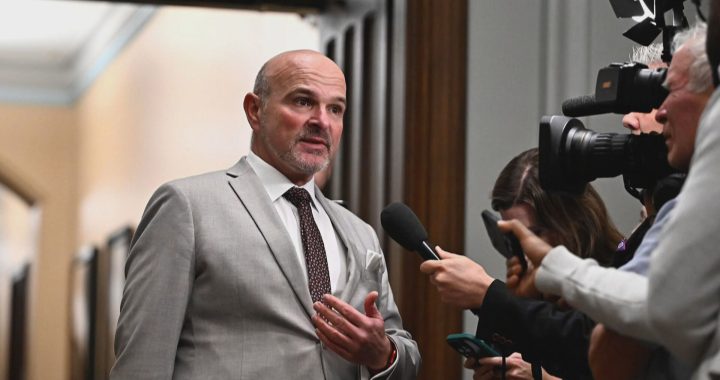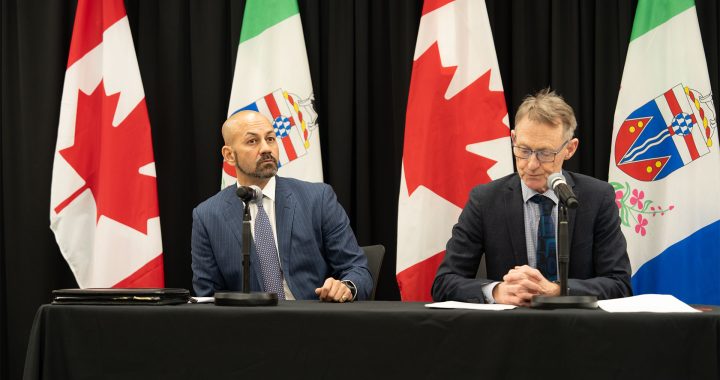By Annette Francis
APTN National News
Canada’s books are good according the Finance Minister Joe Oliver.
Oliver released his fall economic update today at the Canadian Club of Toronto.
The finance minister began in a familiar vein by describing the global economy as fragile and sputtering, but he said Canada is on the right track. He said the government is projecting a 1.9 billion dollar surplus for next year.
“Our government is taking steps to put more money back into the pockets of Canadian families. We will continue to take the action necessary to secure prosperity for this generation and the next.”
But Jean Crowder, NDP MP and Aboriginal Affairs critic, says while it sounds great that the government’s financial books are nearing the black, a report shows the department of Aboriginal Affairs is in the red and First Nations students are suffering because of it.
According to a department performance report for 2013-14, Aboriginal Affairs held back tens of millions of dollars in First Nation education. The public document shows that Aboriginal Affairs planned to spend $300,465,700 on education facilities across the country but only paid out $242,389,389 leaving more than $86-million behind.
The result of this money being spent elsewhere or not at all is clear, says Crowder, “First Nation kids on-reserve are lagging far behind provincial standards when it comes to numeracy and literacy skills.”
According to the report released last week, male First Nation students in Ontario scored only 21% in literacy skills. Numeracy skills were even worse at 18%. What isn’t clear is how many First Nation students were tested or what grades they were in. Aboriginal Affairs did not address the dismal literacy and numeracy rates when asked by APTN.
Literacy, Atlantic: M: 65% F: 70%
Numeracy, Atlantic: M: 16% F: 54%
Literacy, Ontario: M: 21% F: 32%
Numeracy, Ontario: M: 18% F: 20%
Literacy, Manitoba: M: 53% F: 65%
Numeracy, Manitoba: M: 59% F: 50%
Literacy, Alberta: M: 28% F: 36%
Numeracy, Alberta: M: 21% F: 19%
“This is the first year in which data for students ordinarily resident on-reserve was provided for every province through the First Nations Student Success Program,” the report states. “The numeracy and literacy rates presented in the above table will provide a baseline to which future results will be compared.”
According to the authors, “the academic outcomes of First Nation students ordinarily resident on reserve require improvement to ensure an increase in graduation rates and to provide them with the opportunity to acquire the skills that they need to further their goals, enter the labour market and be full participants in a strong Canadian economy.”
None of this is shocking says child welfare advocate Cindy Blackstock. Blackstock, executive director of the First Nations Child and Family Caring Society, has been in a 7 year long fight at the Canadian Human Rights Tribunal in a case that alleges the Federal Government underfunds First Nations Child Welfare.
“When you know better for children you’re supposed to do better,” said Blackstock. “In this case, the federal government knows it profoundly under-funds First Nations schools and education and is not doing better. It is unconscionable that the Federal Government boasts about a surplus budget while turning its back on children in Canada who want to learn so they can get the job of their dreams.”
Crowder says if Blackstock wins the complaint at the Tribunal, it could impact issues like education. She says what’s at stake is the future for First Nations children, yet the government refuses to provide equal funding.
“The government doesn’t acknowledge the underfunding in First Nations Education,” said Crowder. “And it doesn’t acknowledge that it doesn’t need the Education Act in order to increase spending for First Nations Education and it certainly isn’t working with First Nations in terms of addressing the inequities in the system.”
Aboriginal Affairs Minister Bernard Valcourt’s office did not respond directly to APTN’s questions about the report. Instead, a spokesperons in his office sent this statement.
“Our Government has made improving the quality of life and creating economic development opportunities for Aboriginal Communities its priority. We are achieving this goal while treating taxpayer’s money with the utmost respect.
Surplus in the near future:
After 2015-16, Ottawa is forecasting a surplus of $4.3 billion in 2016-17; $5.1 billion in 2017-18; $6.8 billion in 2018-19 and $13.1 billion in 2019-20.
Not surprisingly, the Harper government’s fall fiscal update is getting slammed by the opposition.
Liberal Leader Justin Trudeau calls it unfair because the Conservatives are choosing to spend the budget surplus on tax breaks like income splitting, which he says benefit only 15 per cent of Canadians, including the wealthiest.
N-D-P leader Tom Mulcair is accusing the government of taking from the poor to give to the rich.
@APTNAfrancis
-with files from The Canadian Press









